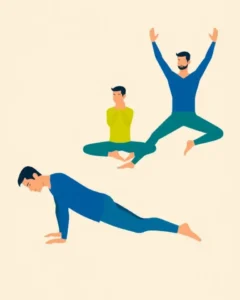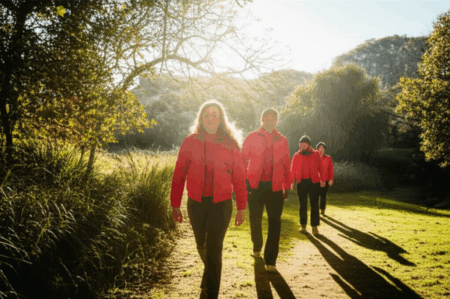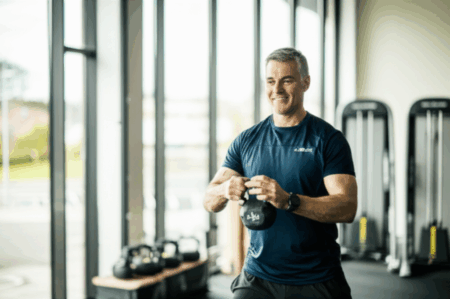The lunge. It’s a workout move many love to hate, but this simple exercise packs a serious punch. Often overlooked, incorporating lunges into your fitness routine can bring a wealth of benefits, enhancing everything from your lower body strength to your overall balance. Whether you’re a seasoned athlete or just starting your fitness journey, understanding the power of the lunge can revolutionize your workouts.
Why Lunges Deserve a Spot in Your Routine
Lunges are more than just a leg day exercise; they’re a functional movement that translates directly into everyday activities. This means the strength and stability you build with lunges will help you in everything from climbing stairs to carrying groceries.
Here are nine compelling reasons to make lunges a regular part of your exercise regimen:
1. Strengthens Multiple Muscle Groups
Lunges are a compound exercise, meaning they work multiple muscle groups simultaneously. Primarily, lunges target:
- Quadriceps: The muscles on the front of your thighs, responsible for extending your knees.
- Hamstrings: The muscles on the back of your thighs, responsible for flexing your knees and extending your hips.
- Glutes: The muscles in your buttocks, responsible for hip extension and rotation.
- Calves: The muscles in your lower legs, responsible for plantarflexion (pointing your toes).
- Core: The muscles in your abdomen and back, responsible for stabilizing your spine.
By engaging all these muscles in a single movement, lunges offer an efficient and effective way to build overall lower body strength.
2. Improves Balance and Stability
Lunges are a unilateral exercise, meaning they work one leg at a time. This forces your body to engage your core and stabilizer muscles to maintain balance. Over time, this leads to improved balance and stability, reducing your risk of falls and injuries. According to Hinge Health, lunges can improve balance by stabilizing your core.
3. Enhances Functional Fitness
Functional fitness focuses on exercises that mimic real-life movements. Lunges fit perfectly into this category, as they replicate movements like walking, running, and climbing. By strengthening the muscles used in these activities, lunges can make everyday tasks easier and more efficient.
4. Corrects Muscle Imbalances
Because lunges work each leg independently, they can help identify and correct muscle imbalances. If one leg is significantly weaker than the other, lunges will highlight this difference, allowing you to focus on strengthening the weaker side and achieve more balanced muscle development. Healthline notes that lunges allow you to improve asymmetries in strength.
5. Increases Core Strength
While lunges primarily target the lower body, they also engage your core muscles. Maintaining proper form during a lunge requires a strong and stable core, which helps protect your spine and improve your overall posture.
6. Boosts Athletic Performance
For athletes, lunges can be a valuable tool for improving performance. By strengthening the muscles used in running, jumping, and other athletic activities, lunges can increase power, speed, and agility. Runner’s World reported that lunges improve balance, stability, and muscle mass, and even optimize the effect of exercise.
7. Promotes Flexibility and Range of Motion
Lunging to depth can help develop strength across an increased range of motion, which helps with flexibility and injury risk reduction. The deep bend in the knee and hip joints during a lunge promotes flexibility and improves range of motion in these areas. This can be particularly beneficial for individuals who spend long hours sitting or who have tight hip flexors.
8. Aids in Injury Prevention and Rehabilitation
By strengthening the muscles around the knees, hips, and ankles, lunges can help prevent injuries to these joints. They are often incorporated into injury prevention programs. Lunges are also a functional exercise that works multiple muscles across the hips, knees, and ankle joints at the same time, which is important for injury prevention, according to Healthline. Additionally, lunges can be used as part of a rehabilitation program after injuries have occurred.
9. Versatile and Adaptable
One of the greatest advantages of lunges is their versatility. There are many different variations of the lunge, each targeting slightly different muscles and offering unique benefits. This allows you to customize your lunge routine to meet your specific fitness goals and needs.
Lunge Variations to Spice Up Your Workout
Ready to incorporate lunges into your routine? Here are a few popular variations to get you started:
- Forward Lunge: This is the classic lunge variation, where you step forward with one leg and lower your body until both knees are bent at 90-degree angles.
- Reverse Lunge: In this variation, you step backward with one leg, lowering your body in the same way as a forward lunge.
- Walking Lunge: This dynamic variation involves alternating forward lunges, stepping forward with each leg in a walking motion.
- Lateral Lunge: This variation works your inner and outer thighs by stepping to the side and bending one knee while keeping the other leg straight.
- Curtsy Lunge: This variation targets your glutes by stepping one leg behind the other in a curtsy motion.
- Jumping Lunge: A more advanced variation that adds a plyometric element by jumping between lunges.
- Static Lunge (Split Squat): Involves maintaining a split stance without stepping, focusing on controlled up-and-down movements.
Mastering the Perfect Lunge Form
To reap the full benefits of lunges and avoid injury, it’s crucial to maintain proper form. Here are a few key points to keep in mind:
- Start with a good posture: Stand tall with your core engaged and your shoulders back.
- Take a controlled step: Whether you’re stepping forward or backward, make sure your step is long enough that your front knee doesn’t extend past your toes.
- Lower your body: Bend both knees to 90 degrees, keeping your front knee aligned with your ankle and your back knee hovering just above the ground. Mayo Clinic recommends ensuring that your knee doesn’t go beyond your toes and that your knee stays centered over your foot.
- Maintain an upright torso: Avoid leaning forward or backward, keeping your core engaged to maintain a stable spine.
- Push back to the starting position: Use your front leg to push yourself back to the starting position, engaging your glutes and hamstrings.
Making Lunges Work for You
- Start slowly: If you’re new to lunges, start with a few repetitions and gradually increase the number as you get stronger.
- Use a mirror: Practicing in front of a mirror can help you monitor your form and ensure you’re performing the exercise correctly.
- Listen to your body: If you experience any pain, stop the exercise and consult with a healthcare professional.
- Incorporate variations: Experiment with different lunge variations to challenge your muscles in new ways and prevent boredom.
- Add weight: As you get stronger, you can add weight to your lunges by holding dumbbells or wearing a weighted vest.
The Verdict
Lunges are a versatile and effective exercise that offers a wide range of benefits. From strengthening multiple muscle groups to improving balance and stability, lunges can help you achieve your fitness goals and enhance your overall quality of life. So, ditch the excuses and lunge your way to a stronger, healthier you!







